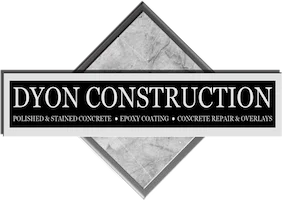Introduction
Selecting the ideal flooring for your space is a pivotal decision that impacts both functionality and aesthetics. Two popular choices, epoxy flooring and concrete staining, offer distinct advantages and cater to different design preferences and usage requirements. This comprehensive guide will explore the nuances of each option, examining their benefits, drawbacks, costs, maintenance requirements, and aesthetic possibilities to help you determine the best fit for your needs.
Overview of Epoxy Flooring
Epoxy flooring is a robust and versatile flooring solution renowned for its durability and seamless finish. It is created by mixing resin and hardener, which chemically bond to form a rigid plastic material that adheres firmly to the concrete substrate. Epoxy flooring is often used in commercial, industrial, and residential settings due to its resistance to chemicals, stains, and wear. Available in a variety of colors and finishes, including high-gloss and matte, epoxy can also incorporate decorative elements like metallic pigments, color flakes, or quartz aggregates to enhance its appearance.
Overview of Concrete Staining
Concrete staining is a process that infuses color into the surface of the concrete, creating a rich, translucent finish that enhances the natural texture and character of the material. Stains are available in two main types: acid-based and water-based. Acid-based stains react chemically with the concrete, producing variegated and often unpredictable color variations, while water-based stains offer a broader range of colors and more uniform results. Concrete staining is valued for its ability to impart a unique, natural look that can mimic the appearance of stone, marble, or other high-end materials.
Pros and Cons of Epoxy Flooring
Pros
Epoxy flooring offers several significant advantages. Its durability is unparalleled, making it suitable for high-traffic areas and environments subjected to heavy use. The seamless surface is easy to clean and maintain, resisting spills, stains, and abrasions. Epoxy’s chemical resistance makes it ideal for garages, workshops, and industrial spaces where spills are common. The aesthetic versatility of epoxy flooring is another major benefit, with options ranging from solid colors to intricate designs incorporating metallic effects or decorative flakes.
Cons
However, epoxy flooring has some drawbacks. The installation process is complex and requires thorough surface preparation to ensure proper adhesion, often necessitating professional installation. Epoxy floors can become slippery when wet, posing a safety risk unless anti-slip additives are used. Additionally, while epoxy is durable, it can crack or chip if the underlying concrete shifts or is not properly prepared. The curing time for epoxy can be lengthy, requiring the area to be out of use for several days.
Pros and Cons of Concrete Staining
Pros
Concrete staining is appreciated for its aesthetic appeal and ability to create a one-of-a-kind look. The staining process highlights the natural variations and imperfections in the concrete, resulting in a unique and organic appearance. Stained concrete is relatively low-maintenance and durable, resistant to fading, chipping, and peeling when properly sealed. The cost of staining is generally lower than other flooring options, and it can be applied to both new and existing concrete surfaces.
Cons
On the downside, concrete staining offers limited protection against heavy wear and tear compared to epoxy. The finish can be susceptible to staining from spills if not adequately sealed. Additionally, while acid stains create beautiful, natural-looking color variations, the results can be unpredictable, which may not be suitable for all design preferences. The application process, while less complex than epoxy, still requires careful preparation and sealing to ensure longevity.
Cost Comparison
When comparing costs, concrete staining typically has a lower initial expense. The cost of staining concrete can range from $2 to $4 per square foot, depending on the complexity of the design and the type of stain used. Epoxy flooring, on the other hand, usually ranges from $3 to $7 per square foot, with more elaborate designs and finishes potentially increasing the cost. While the initial cost of epoxy is higher, its durability and low maintenance requirements can provide long-term savings.
Maintenance and Longevity
Maintenance and longevity are critical factors in choosing between epoxy flooring and concrete staining. Epoxy flooring requires minimal maintenance, with regular sweeping and occasional mopping sufficient to keep it looking new. The seamless surface prevents dirt and grime from accumulating in crevices, and its resistance to chemicals and stains reduces the need for frequent cleaning. Epoxy floors can last 10-20 years or more with proper care.
Concrete staining also requires low maintenance, primarily consisting of regular sweeping and mopping. However, stained concrete must be sealed to protect against stains and wear, and this sealer may need to be reapplied periodically. When properly maintained, stained concrete floors can last for decades, but their longevity is somewhat dependent on the quality of the sealant used.
Aesthetic and Design Options
Aesthetic and design options are where epoxy flooring and concrete staining truly diverge. Epoxy flooring offers a high degree of customization, with a wide range of colors, finishes, and decorative elements available. From sleek, solid colors to dazzling metallic finishes and embedded aggregates, epoxy can be tailored to suit virtually any design aesthetic.
Concrete staining, while offering fewer customization options, excels in creating natural, earthy tones and variegated color patterns that enhance the inherent beauty of the concrete. Acid stains produce rich, organic hues with a marble-like effect, while water-based stains provide a more consistent color palette with broader color choices. Stained concrete is ideal for achieving a rustic, industrial, or contemporary look with a natural touch.
Conclusion
Choosing between epoxy flooring and concrete staining ultimately depends on your specific needs, aesthetic preferences, and budget. Epoxy flooring offers exceptional durability, low maintenance, and extensive customization options, making it ideal for high-traffic areas and spaces requiring a polished, professional look. Concrete staining provides a unique, natural aesthetic with a lower initial cost and sufficient durability for many residential and commercial applications. By carefully considering the pros and cons of each option, you can select the flooring solution that best enhances your space and meets your practical requirements.

